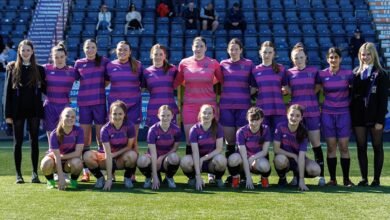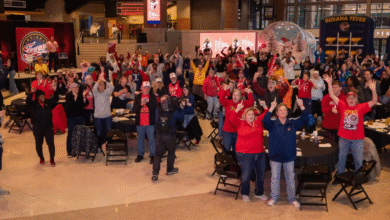Super Mario 64’s GitLab Revolution Changes Gaming Forever

Introduction
When Nintendo released Super Mario 64 in 1996, few could have predicted that decades later, a dedicated team of programmers would painstakingly recreate its source code and host it on GitLab. This ambitious reverse-engineering project has transformed how we think about game preservation, modding, and the intersection of classic gaming with modern development practices.
The Super Mario 64 GitLab project represents one of the most significant achievements in video game archaeology. By meticulously analyzing the original Nintendo 64 ROM, contributors have rebuilt the game’s source code from scratch, creating a fully functional recreation that compiles into a bit-perfect match of the original. This isn’t just a curiosity for retro gaming enthusiasts it’s a watershed moment that demonstrates the power of collaborative development and open-source principles applied to beloved gaming classics.
What makes this project particularly fascinating is how it bridges the gap between Nintendo’s proprietary development from the 1990s and today’s transparent, community-driven programming culture. The result is unprecedented insight into one of gaming’s most influential titles, complete with the ability to run on modern hardware without emulation.
The Origins of a Gaming Archaeological Dig
The Super Mario 64 decompilation project didn’t emerge overnight. It began as part of a broader movement among programming enthusiasts to understand and preserve classic games through reverse engineering. Unlike traditional ROM hacking, which modifies existing game files, decompilation involves recreating the original source code that developers used to build the game.
This process requires extraordinary patience and technical skill. Contributors must analyze assembly code, understand hardware limitations of the Nintendo 64, and make educated guesses about how Nintendo’s programmers structured their code. Every function, every variable, and every algorithm must be carefully reconstructed based on the compiled output.
The project gained momentum around 2019 when initial builds began producing playable results. As word spread through programming communities, contributors from around the world began joining the effort. The collaborative nature of GitLab proved perfect for coordinating such a complex undertaking, allowing developers to work on different aspects simultaneously while maintaining code integrity.
What started as a technical challenge evolved into something much larger: a comprehensive documentation of one of gaming’s most important titles. The decompiled code reveals programming techniques, optimization strategies, and creative solutions that Nintendo’s team employed to push the Nintendo 64 hardware to its limits.
Technical Mastery Behind the Code
The technical achievement of the Super Mario 64 GitLab project cannot be overstated. Nintendo 64 development in the 1990s involved working within severe memory constraints, custom graphics pipelines, and unique controller input systems. Recreating this environment required deep understanding of both vintage hardware architecture and modern compilation techniques.
One of the project’s most impressive aspects is its accuracy. The decompiled code, when compiled with the appropriate tools, produces a ROM that matches the original byte-for-byte. This level of precision demonstrates the contributors’ commitment to authenticity and their sophisticated understanding of the Nintendo 64’s development environment.
The project also reveals fascinating insights into Nintendo’s programming practices. The source code shows how the development team handled complex 3D mathematics, memory management, and the game’s revolutionary camera system. These revelations have educational value beyond gaming, offering computer science students and professionals real-world examples of efficient programming under constraints.
Perhaps most importantly, the decompiled code runs natively on modern hardware without requiring Nintendo 64 emulation. This means improved performance, higher resolutions, and the potential for enhancements that would be impossible with traditional emulation approaches.
A Global Community United by Code
The Super Mario 64 GitLab project exemplifies the power of distributed collaboration. Contributors from different continents work together, each bringing unique skills and perspectives to the decompilation effort. Some specialize in graphics programming, others focus on audio systems, and still others work on user interface elements.
GitLab’s collaborative features have been essential to managing this complexity. The platform’s issue tracking system helps coordinate work on specific game functions, while merge requests ensure code quality and accuracy. Contributors can propose changes, discuss implementation details, and test modifications in a structured environment.
The project has also fostered educational initiatives. Experienced contributors mentor newcomers, explaining reverse engineering techniques and Nintendo 64 architecture. This knowledge transfer ensures the project’s continuation while building broader expertise in game preservation techniques.
Documentation plays a crucial role in the community’s success. Contributors maintain extensive wikis explaining their discoveries, from memory layouts to algorithm implementations. This documentation serves both current contributors and future researchers interested in understanding classic game development.
Navigating Legal and Ethical Waters
The Super Mario 64 GitLab project operates in complex legal territory. While the contributors have created original source code through reverse engineering, the game itself remains Nintendo’s intellectual property. The project carefully avoids distributing copyrighted assets, requiring users to provide their own legally obtained ROM files.
This approach follows established precedent in software reverse engineering. Courts have generally recognized reverse engineering for interoperability and educational purposes as fair use, particularly when no copyrighted code is directly copied. The contributors’ clean-room approach—recreating functionality without copying original code—strengthens their legal position.
However, legal considerations vary by jurisdiction, and Nintendo has historically been protective of its intellectual property. The project maintains a low profile regarding distribution and emphasizes educational and preservation goals rather than commercial applications.
The ethical dimensions are equally complex. Supporters argue that preservation of important cultural artifacts like Super Mario 64 justifies the effort, especially as original hardware becomes increasingly rare. Critics contend that even legal reverse engineering undermines creators’ rights and market control.
Transforming Game Preservation and Modding
The success of the Super Mario 64 GitLab project has implications far beyond a single game. It demonstrates a viable path for preserving classic titles that might otherwise become unplayable as original hardware fails and becomes scarce.
Traditional game preservation relies on emulation, which introduces layers of interpretation between original code and modern hardware. Source code recreation eliminates this barrier, ensuring perfect compatibility and performance. As retro gaming communities grow, this approach becomes increasingly valuable.
The project has also revolutionized Super Mario 64 modding. With access to readable source code, modders can make sophisticated changes that were previously impossible or extremely difficult. New levels, gameplay mechanics, and visual effects become achievable through direct code modification rather than complex ROM hacking techniques.
These capabilities have spawned numerous derivative projects. Some focus on quality-of-life improvements like modern control schemes or visual enhancements. Others create entirely new experiences using Super Mario 64’s engine as a foundation. The availability of source code has democratized game modification, allowing creators without deep assembly programming knowledge to contribute.
Looking Ahead: The Future of Open Gaming
The Super Mario 64 GitLab project has inspired similar efforts targeting other classic games. Developers are applying the same reverse engineering techniques to titles like The Legend of Zelda: Ocarina of Time, Super Mario World, and various arcade classics. Each successful decompilation builds the community’s expertise and resources.
These projects face ongoing challenges. Legal uncertainties continue to create risk for contributors and users. Technical hurdles remain significant, as each game presents unique reverse engineering challenges. Maintaining long-term community engagement requires sustained effort and clear project goals.
However, the benefits continue expanding. Modern development tools and practices can improve upon original implementations while maintaining authenticity. Cross-platform compatibility becomes possible without emulation overhead. Educational opportunities multiply as more classic code becomes available for study.
The project also highlights broader questions about digital ownership and preservation. As gaming moves toward streaming and subscription models, the importance of preserving classic titles in accessible formats becomes more pressing. Community-driven preservation efforts may become essential safeguards for gaming history.
Frequently Asked Questions
Is the Super Mario 64 GitLab project legal?
The project operates in a legal gray area but follows established reverse engineering precedent. Contributors create original code without copying Nintendo’s copyrighted material, focusing on educational and preservation goals. However, legal risks vary by jurisdiction.
How accurate is the decompiled code compared to Nintendo’s original?
The decompiled code is remarkably accurate, producing ROMs that match the original byte-for-byte when compiled properly. This level of precision demonstrates the contributors’ sophisticated understanding of Nintendo 64 development practices.
Can I use this project to play Super Mario 64 on modern devices?
Yes, the decompiled code can run natively on modern hardware without emulation. However, you must provide your own legally obtained ROM file, as the project doesn’t distribute copyrighted game assets.
What skills are needed to contribute to the project?
Contributors need programming experience, particularly in C and assembly language. Understanding of Nintendo 64 hardware architecture is helpful but not required, as the community provides mentorship and educational resources.
How does this project affect Nintendo’s rights?
The project respects Nintendo’s intellectual property by avoiding distribution of copyrighted assets. However, Nintendo retains full rights to the Super Mario 64 brand, characters, and original creative content.
The Lasting Legacy of Collaborative Preservation
The Super Mario 64 GitLab project stands as a testament to what dedicated communities can achieve when united by shared passion and technical expertise. By successfully reverse engineering one of gaming’s most beloved titles, contributors have not only preserved an important piece of digital history but also demonstrated new possibilities for understanding and experiencing classic games.
This achievement extends beyond nostalgia or technical curiosity. It represents a new model for cultural preservation in the digital age, where communities can take active roles in safeguarding important creative works. As original hardware becomes increasingly scarce and emulation faces ongoing challenges, source code recreation offers a path toward authentic preservation.
The project’s success also highlights the educational value of studying well-crafted software. Super Mario 64’s code reveals decades-old programming techniques that remain relevant today, offering lessons in optimization, creativity, and working within constraints. For aspiring game developers and computer scientists, this code serves as a masterclass in practical software engineering.
Looking forward, the Super Mario 64 GitLab project has established frameworks and communities that will likely influence game preservation for years to come. Its combination of technical rigor, collaborative development, and respect for intellectual property creates a template that other preservation efforts can follow.
The true measure of the project’s success may not be in its technical achievements, impressive as they are, but in its demonstration that passionate communities can bridge the gap between gaming’s past and future. Through careful reverse engineering and open collaboration, a new generation of developers and enthusiasts can engage with classic games in ways their original creators never imagined.



